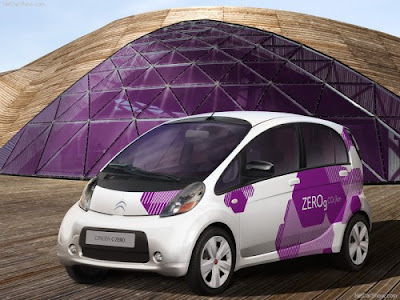The Citroen has announced a 100 percent electric vehicle called the Citroen C-Zero. The 3.48m-long city car is based on the Mitsubishi i-MiEV as well as sister company Peugeot's iOn.
2011 Citroen C-Zero is a full-electric vehicle powered by a permanent magnet synchronous motor delivering 47kW or 64bhp EEC from 3,000 to 6,000rpm. Maximum torque of 180Nm is available from 0 to 2,000rpm. Power is transmitted to the rear axle via a single-speed reduction gear.
The motor is powered by a latest-generation 330-volt lithium-ion battery system comprising 88 50Ah cells (for onboard energy of 16kWh), mounted in the centre of the vehicle. Lithium-ion technology keeps battery weight down compared with conventional technology, while offering equivalent performance. It is also resistant to partial re-charges, which have no impact on battery longevity.
EASY TO CHARGE, EASY TO USE
Re-charging the 2011 C-Zero's batteries could not be simpler. Owners plug the supply cord into a 220-volt socket. A complete charge takes six hours, while an 80% charge is possible in just 30 minutes using an external station with a single-phase current of 125A at 400V, for power of up to 50kW.
Using the car is equally simple. When the driver turns the ignition key, a beep confirms that the car is running. Citroen C-Zero drives like a regular car with an automatic gearbox. The traditional fuel gauge is replaced by a battery charge indicator.
A NEW PRODUCT OFFERING CONSISTENT WITH CITROEN POLICY
Long committed to a policy of reducing fuel consumption and greenhouse gas emissions, Citroen - a leading manufacturer of low CO2 cars - is adding the C-Zero to a range that already features a wealth of environmentally respectful products.
Current Citroen achievements:
- New C3 and DS3 models emitting 99g/km of CO2 will be available from launch in 2010.
- More than 30% of Citroen vehicles sold emit less than 120g/km of CO2.
Up-coming technologies:
- Widespread application of second-generation Stop & Start in 2010.
- Launch of a full-hybrid vehicle, the DS5, in 2011.

No comments:
Post a Comment